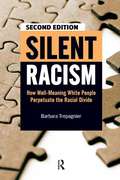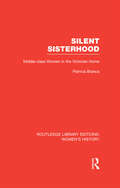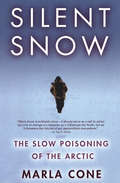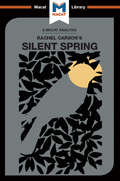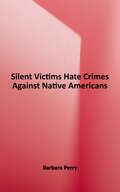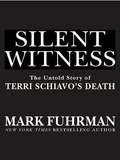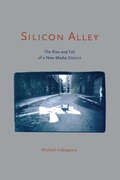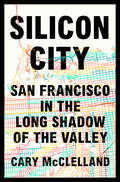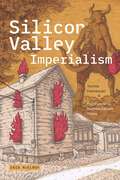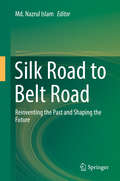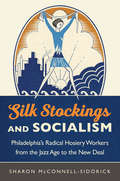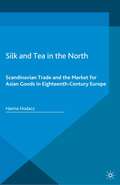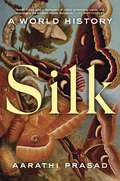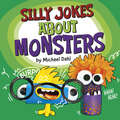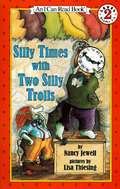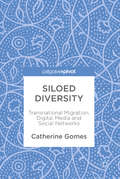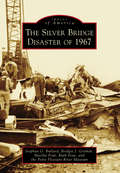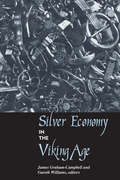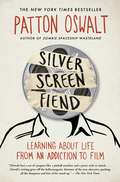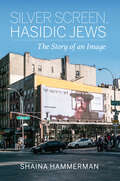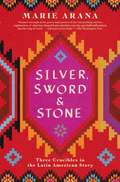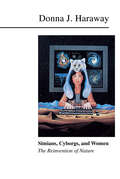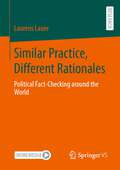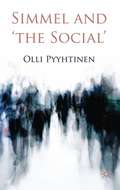- Table View
- List View
Silent Racism: How Well-Meaning White People Perpetuate the Racial Divide (Second Edition)
by Barbara TrepagnierVivid and engaging, Silent Racism persuasively demonstrates that silent racism―racism by people who classify themselves as “not racist”―is instrumental in the production of institutional racism. Trepagnier argues that heightened race awareness is more important in changing racial inequality than judging whether individuals are racist. The collective voices and confessions of “nonracist” white women heard in this book help reveal that all individuals harbor some racist thoughts and feelings. Trepagnier uses vivid focus group interviews to argue that the oppositional categories of racist/not racist are outdated. The oppositional categories should be replaced in contemporary thought with a continuum model that more accurately portrays today’s racial reality in the United States. A shift to a continuum model can raise the race awareness of well-meaning white people and improve race relations. Offering a fresh approach, Silent Racism is an essential resource for teaching and thinking about racism in the twenty-first century.
Silent Sisterhood: Middle-class Women in the Victorian Home (Routledge Library Editions: Women's History)
by Patricia BrancaThis perceptive book studies the Victorian woman in the home and in the family. One of the central purposes is to rescue Victorian woman from the realm of myth where her life was spent in frivolous trifles and instead to show how she had a major part to play in the practical management of the home. The author makes judicious use of domestic manuals and other material written specifically for middle-class women. With statistical data to quantify the image as well, this book presents a better understanding of what it was like to be a middle-class woman in nineteenth-century England. Looking at the middle-class woman’s problems as mistress of the house, her problems with domestics, her problems as mother and her problems as woman we can begin not merely to characterise the middle-class woman but to define her as an element of British social history and as a silent but significant agent of change. The book was first published in 1975.
Silent Snow: The Slow Poisoning of the Arctic
by Marla Cone&“A slender but punch-packing overview of the environmental destruction of the Far North&” from the award-winning environmental reporter (Kirkus Reviews). Traditionally thought of as the last great unspoiled territory on Earth, the Arctic is in reality home to some of the most severe contamination on the planet. Awarded a major grant by the Pew Charitable Trusts to study the Arctic&’s deteriorating environment, Los Angeles Times environmental reporter Marla Cone traveled across the Far North, from Greenland to the Aleutian Islands, to find out why the Arctic has become so toxic. Silent Snow is not only a scientific journey, but a personal one with experiences that range from tracking endangered polar bears in Norway to hunting giant bowhead whales with native Alaskans struggling to protect their livelihood. Through it all, Cone reports with heartbreaking immediacy on the dangers of pollution to native peoples and ecosystems, how Arctic cultures are adapting to this pollution, and what solutions will prevent the crisis from getting worse.
Silent Spring
by Nikki SpringerRachel Carson’s 1962 Silent Spring is one of the few books that can claim to be epoch-making. Its closely reasoned attack on the use of pesticides in American agriculture helped thrust environmental consciousness to the fore of modern politics and policy, creating the regulatory landscape we know today. The book is also a monument to the power of closely reasoned argument – built from well organised and carefully evidenced points that are not merely persuasive, but designed to be irrefutable. Indeed, it had to be: upon its publication, the chemical industry utilised all its resources to attempt to discredit both Silent Spring and Carson herself – to no avail. The central argument of the book is that the indiscriminate use of pesticides encouraged by post-war advances in agriculture and chemistry was deeply harmful to plants, animals and the whole environment, with devastating effects that went far beyond protecting crops. At the time, the argument directly contradicted government policy and scientific orthodoxy – and many studies that corroborated Carson’s views were deliberately suppressed by hostile business interests. Carson, however, gathered, organised and set out the evidence in Silent Spring in a way that proved her contentions without a doubt. While environmental battles still rage, few now deny the strength and persuasiveness of her reasoning.
Silent Victims: Hate Crimes Against Native Americans
by Barbara PerryHate crimes against Native Americans are a common occurrence, Barbara Perry reveals, although most go unreported. In this eye-opening book, Perry shines a spotlight on these acts, which are often hidden in the shadows of crime reports. She argues that scholarly and public attention to the historical and contemporary victimization of Native Americans as tribes or nations has blinded both scholars and citizens alike to the victimization of individual Native Americans. It is these acts against individuals that capture her attention. <p><p> Silent Victims is a unique contribution to the literature on hate crime. Because most extant literature treats hate crimes—even racial violence—rather generically, this work breaks new ground with its findings. For this book, Perry interviewed nearly 300 Native Americans and gathered additional data in three geographic areas: the Four Corners region of the U.S. Southwest, the Great Lakes, and the Northern Plains. In all of these locales, she found that bias-related crime oppresses and segregates Native Americans. <p><p> Perry is well aware of the history of colonization in North America and its attendant racial violence. She argues that the legacy of violence today can be traced directly to the genocidal practices of early settlers, and she adds valuable insights into the ways in which “Indians” have been constructed as the Other by the prevailing culture. Perry’s interviews with Native Americans recount instances of appalling treatment, often at the hands of law enforcement officials. In her conclusion, Perry draws from her research and interviews to suggest ways in which Native Americans can be empowered to defend themselves against all forms of racist victimization.
Silent Witness: The Untold Story of Terri Schiavo's Death
by Mark FuhrmanWe all watched Terri Schiavo die. The controversy around her case dominated the headlines and talk shows, going all the way to the U.S. Supreme Court, the White House, and the Vatican. And it's not over yet. Despite her death, the controversy lingers. In Silent Witness, former LAPD detective and New York Times bestselling author Mark Fuhrman applies his highly respected investigative skills to examine the medical evidence, legal case files, and police records. With the complete cooperation of Terri Schiavo's parents and siblings, as well as their medical and legal advisers, he conducts exclusive interviews with forensics experts and crucial witnesses, including friends, family members, and caregivers. Fuhrman's findings will answer these questions: What was Terri and Michael Schiavo's marriage really like? What happened the day Terri collapsed? What did Michael Schiavo do when he discovered Terri unconscious? How long did he wait before calling 911? What do medical records show about her condition when she was first admitted to the hospital? What will the autopsy say? The legal issues and ethical questions provoked by Terri Schiavo's extraordinary case may never be resolved. But the facts about her marriage, her condition when she collapsed, and her eventual death fifteen years later can be determined. With Silent Witness, Fuhrman goes beyond the legal aspects of the case and delves into the broader, human background of Terri Schiavo's short, sad life.
Silicon Alley: The Rise and Fall of a New Media District (Cultural Spaces)
by Michael IndergaardThe 1990s dawned with a belief that the digital revolution would radically transform our traditional notion of cities as places of commerce and industry. Many predicted that digital technology would render cities--or at least their economies--obsolete. Instead, precisely the opposite happened. The IT-intensive firms of the new economy needed to be plugged into a sizeable network of talent, something that established cities like New York and San Francisco provided in abundance. In addition to creating new types of jobs and luring thousands of workers back into the city, new media districts created a new technobohemian urban culture. With vignettes of the high-rollers in New York's new media economy and stories of wild parties in downtown lofts, Michael Indergaard introduces us to the players in this new economy, and explores this intersection of commerce and culture in 1990s New York. He also reveals how the dot-com crash laid bare the hidden connections between the so-called new economy of new media, and the ages old engines of New York wealth: real estate speculators and Wall Street. Chronicling the go-go years and ultimate crash of the new media district, Silicon Alley is a brilliant account of how hype forged a marriage of technology and finance, which in turn generated a new urban culture.
Silicon City: San Francisco In The Long Shadow Of The Valley
by Cary McClellandAn intimate, eye-opening portrait of San Francisco transformed by the tech boom. San Francisco is changing at warp speed. Famously home to artists and activists, and known as the birthplace of the Beats, the Black Panthers, and the LGBTQ movement, in recent decades the Bay Area has been reshaped by Silicon Valley, the engine of the new American economy. The richer the region gets, the more unequal and less diverse it becomes, and cracks in the city’s facade—rapid gentrification, an epidemic of evictions, rising crime, atrophied public institutions—have started to show. Inspired by Studs Terkel’s classic works of oral history, writer and filmmaker Cary McClelland spent several years interviewing people at the epicenter of the recent change, from venture capitalists and coders to politicians and protesters, from native sons and daughters to the city’s newest arrivals. The crisp and vivid stories of Silicon City’s diverse cast capture San Francisco as never before. The book opens with a longtime tour guide recounting the history of the original Gold Rush and observing how little the people of his city pay attention to its history; it ends on Fisherman’s Wharf, with the proprietor of an arcade game museum reminding us that even today’s technology will become relics of the past. In between we hear from people who have passed through Apple, Google, eBay, Intel, and the other big tech companies of our time. And we meet those who are experiencing the changes at the grassroots level: a homeless advocate in Haight-Ashbury, an Oakland rapper, a pawnbroker in the Mission, a man who helped dismantle and rebuild the Bay Bridge, and a woman who runs a tattoo parlor in the Castro. Silicon City masterfully weaves together a candid conversation across a divided community to create a dynamic portrait of a beloved city—and a cautionary tale for the entire country.
Silicon Earth
by John D. CresslerWe are in the swirling center of the most life-changing technological revolution the Earth has ever known. In only 60 years, an eye-blink of human history, a single technological invention has launched the proverbial thousand ships, producing the most sweeping and pervasive set of changes ever to wash over humankind; changes that are reshaping the very core of human existence, on a global scale, at a relentlessly accelerating pace. And we are just at the very beginning. Silicon Earth introduces readers with little or no background to the many marvels of microelectronics and nanotechnology, using easy, non-intimidating language, with an intuitive approach using minimal math. The general scientific and engineering underpinnings of microelectronics and nanotechnology are addressed, as well as how this new technological revolution is transforming a broad array of interdisciplinary fields, and civilization as a whole. Special "widget deconstruction" chapters address the inner workings of ubiquitous micro/nano-enabled pieces of technology such as cell phones, flash drives, GPS, DVDs, and digital cameras.
Silicon Valley Imperialism: Techno Fantasies and Frictions in Postsocialist Times
by Erin McElroyIn Silicon Valley Imperialism, Erin McElroy maps the processes of gentrification, racial dispossession, and economic predation that drove the development of Silicon Valley in the San Francisco Bay Area and how that logic has become manifest in postsocialist Romania. Drawing on ethnographic fieldwork and archival research in Romania and the United States, McElroy exposes the mechanisms through which the appeal of Silicon Valley technocapitalism devours space and societies, displaces residents, and generates extreme income inequality in order to expand its reach. In Romania, dreams of privatization updated fascist and anti-Roma pasts and socialist-era underground computing practices. At the same time, McElroy accounts for the ways Romanians are resisting Silicon Valley capitalist logics, where anticapitalist and anti-imperialist activists and protesters build on socialist-era worldviews not to restore state socialism but rather to establish more just social formations. Attending to the violence of Silicon Valley imperialism, McElroy reveals technocapitalism as an ultimately unsustainable model of rapacious economic and geographic growth.
Silk Road to Belt Road: Reinventing the Past and Shaping the Future
by Md. Nazrul IslamThis volume approaches China’s Belt and Road Initiative as a process of culturalization, one that started with the Silk Road and continued over the millennium. In mainstream literature, the Belt and Road Initiative (BRI) has been portrayed as the geo-economic vision and geo-political ambition of China’s current leaders, intended to shape the future of the world. However, this volume argues that although geo-politics and geo-economy may play their part, the BRI more importantly creates a venue for the meeting of cultures by promoting people-to-people interaction and exchange. This volume explores the journey from the Silk-Road to Belt-Road by analyzing topics ranging from history to religion, from language to culture, and from environment to health. As such, scholars, academics, researchers, undergraduate and graduate students from the Humanities, Social Sciences, and Business will find an alternative approach to the Belt and Road Initiative.
Silk Stockings and Socialism: Philadelphia's Radical Hosiery Workers from the Jazz Age to the New Deal
by Sharon McConnell-SidorickThe 1920s Jazz Age is remembered for flappers and speakeasies, not for the success of a declining labor movement. A more complex story was unfolding among the young women and men in the hosiery mills of Kensington, the working-class heart of Philadelphia. Their product was silk stockings, the iconic fashion item of the flapper culture then sweeping America and the world. Although the young people who flooded into this booming industry were avid participants in Jazz Age culture, they also embraced a surprising, rights-based labor movement, headed by the socialist-led American Federation of Full-Fashioned Hosiery Workers (AFFFHW).In this first history of this remarkable union, Sharon McConnell-Sidorick reveals how activists ingeniously fused youth culture and radical politics to build a subculture that included dances and parties as well as picket lines and sit-down strikes, while forging a vision for social change. In documenting AFFFHW members and the Kensington community, McConnell-Sidorick shows how labor federations like the Congress of Industrial Organizations and government programs like the New Deal did not spring from the heads of union leaders or policy experts but were instead nurtured by grassroots social movements across America.
Silk and Tea in the North: Scandinavian Trade and the Market for Asian Goods in Eighteenth-Century Europe (Europe's Asian Centuries)
by Hanna HodacsThis book links the trade of the Danish and Swedish East India companies to the British taste for tea, a Scandinavian craving for colourful Chinese silk textiles, import substitutions schemes and natural history in the eighteenth century. It is a global history exploring the exchange of silver for goods in Canton. It is also a European history studying the wholesale market for Asian goods in Gothenburg and Copenhagen, the formation of taste and the impact of fashion in the blending of tea and the assortments of colours on wrought silk destined for markets across Europe. Linking material history to political economy and the histories of science, this book ends on the threshold of the nineteenth century, the rise of the second British Empire in Asia, and the creation of synthetic dyes in Europe.
Silk: A World History
by Aarathi PrasadA Next Big Idea Book Club Must-Read for April"Aarathi Prasad spins a masterpiece of a story, as luminous, supple, and surprising as the wondrous threads themselves." —Sy Montgomery, bestselling author of The Soul of an Octopus and Of Time and TurtlesThroughout history, across cultures and countries, silk has reigned as the undeniable queen of fabrics, yet its origins and evolution remain a mystery. In a gorgeous and sweeping narrative, Silk weaves together its intricate story and the indelible mark it has left on humanity.Some four thousand years ago, the cultivation of silkworms began, the practice spreading to the far reaches of civilization. With it came a growing obsession with unlocking silk’s secrets to understand how the strongest biological material ever known could be harnessed.Explorers and scientists, including groundbreaking women who pushed the boundaries of societal expectations, dedicated—even sacrificed—their lives to investigate the anatomy of silk-producing animals. They endured unbelievable hardships to discover and collect new specimens, leading them to the moths of China, Indonesia, and India; the spiders of Argentina, Paraguay, and Madagascar; and the mollusks of the Mediterranean.Rich with the complex connections between human and nonhuman worlds, Silk not only peers into the past but also reveals the fiber’s impact today, inspiring new technologies across the fashion, military, and medical fields, and shows its untapped potential to pioneer a more sustainable future.The culmination of author and biologist Aarathi Prasad’s own lifelong passion and grounded in years of research and writing, Silk is an intoxicating read that provides an essential illumination of nature’s most glamourous thread.
Silly Jokes About Monsters (Silly Joke Books)
by Michael DahlGet ready to laugh about monsters! These monster jokes will have you telling them again and again; even if you’re scared silly! Funny photos combined with hilarious jokes will have young readers laughing out loud.
Silly Times With Two Silly Trolls
by Nancy JewellNip and Tuck -- those two fun-loving trolls -- are back. Join in their antics as they play in the snow, create silly poetry, and make time stand still. Things are never dull when these trolls are around.
Siloed Diversity: Transnational Migration, Digital Media And Social Networks
by Catherine GomesThis book examines the experiences of transient migrants in the Asia-Pacific, and in so doing provides new ways of understanding diversity. By focusing on the transient destination hubs of Australia and Singapore, Catherine Gomes shifts our thinking about diversity for two disruptive reasons: the increasingly large and global transient flows of people and our everyday reliance on digital media. The unprecedented usage of digital media influences not only communication patterns and information-seeking behaviour, but has also led to the rapid evolution of the very nature of entertainment and news, and directly impacted on our documenting and mapping of self (e.g. posts of photographs, opinions and links on social media timelines). The book introduces readers to the concept of siloed diversity - a phenomenon which occurs when people rely on a hierarchy of identities developed while in transience to make connections and disconnections with others.
Silver Bridge Disaster of 1967, The
by Bridget J. Gromek Ruth Fout Martha Fout Stephan G. BullardPoint Pleasant's Silver Bridge, the first eyebar suspension bridge in the United States, was an engineering marvel when it was constructed in 1927 and 1928. Located on US Highway 35, the bridge spanned the Ohio River and linked Point Pleasant, West Virginia, with the towns of Kanauga and Gallipolis, Ohio. For almost 40 years, the structure provided dependable service for travelers in the region. On December 15, 1967, this service came to a dramatic and disastrous end. At 4:58 p.m., during the height of rush hour, the bridge suddenly collapsed. Rescue and recovery operations started immediately but were hampered by poor weather conditions and freezing rain. The cause of the collapse was linked to the bridge's innovative design. Undetected corrosion stress cracks caused an eyebar on the Ohio side to fracture; because the eyebars were linked together in a chain, the failure of one led to the catastrophic collapse of the entire bridge. In total, 46 lives were lost in the disaster.
Silver Economy in the Viking Age (UCL Institute of Archaeology Publications)
by Gareth Williams James Graham-CampbellIn this book contributions by archaeologists and numismatists from six countries address different aspects of how silver was used in both Scandinavia and the wider Viking world during the 8th to 11th centuries AD. The volume brings together a combination of recent summaries and new work on silver and gold coinage, rings and bullion, which allow a better appreciation of the broader socioeconomic conditions of the Viking world. This is an indispensable source for all archaeologists, historians and numismatists involved in Viking Studies.
Silver Screen Fiend: Learning About Life from an Addiction to Film
by Patton OswaltThe instant New York Times bestseller from author, comedian and actor Patton Oswalt, a “heartfelt and hilarious” (USA TODAY) memoir about coming of age as a performer during the late 1990s while obsessively watching classic films at a legendary theater in Los Angeles. “[Oswalt has] a set of synapses like a pinball machine and a prose style to match” (The New York Times).Between 1995 and 1999, Patton Oswalt lived with an unshakable addiction. It wasn’t drugs, alcohol, or sex: it was film. After moving to Los Angeles, Oswalt became a huge film buff (or as he calls it, a sprocket fiend), absorbing classics, cult hits, and new releases at the famous New Beverly Cinema. Silver screen celluloid became Patton’s life schoolbook, informing his notion of acting, writing, comedy, and relationships. Set in the nascent days of LA’s alternative comedy scene, Silver Screen Fiend chronicles Oswalt’s journey from fledgling stand-up comedian to self-assured sitcom actor, with the colorful New Beverly collective and a cast of now-notable young comedians supporting him all along the way. “Clever and readable...Oswalt’s encyclopedic knowledge and frothing enthusiasm for films (from sleek noir classics, to gory B movies, to cliché-riddled independents, to big empty blockbusters) is relentlessly present, whirring in the background like a projector” (The Boston Globe). More than a memoir, this is “a love song to the silver screen” (Paste Magazine).
Silver Screen, Hasidic Jews: The Story of an Image
by Shaina Hammerman&“A valuable contribution to a growing body of scholarly work on Jewish visibility in cinema.&” —American Jewish History Motivated by Woody Allen&’s brief comedic transformation into a Hasidic Jew in Annie Hall, cultural historian Shaina Hammerman examines the effects of real and imagined representations of Hasidic Jews in film, television, theater, and photography. Although these depictions could easily be dismissed as slapstick comedies and sexy dramas about forbidden relationships, Hammerman uses this ethnic imagery to ask meaningful questions about how Jewish identity, multiculturalism, belonging, and relevance are constructed on the stage and silver screen—questions relevant to any minority in present-day America and Europe.
Silver, Sword, and Stone: Three Crucibles in the Latin American Story
by Marie AranaWinner, American Library Association Booklist&’s Top of the List, 2019 Adult Nonfiction Longlisted for the 2020 Andrew Carnegie Medals for Excellence Against the background of a thousand years of vivid history, acclaimed writer Marie Arana tells the timely and timeless stories of three contemporary Latin Americans whose lives represent three driving forces that have shaped the character of the region: exploitation (silver), violence (sword), and religion (stone).Leonor Gonzales lives in a tiny community perched 18,000 feet above sea level in the Andean cordillera of Peru, the highest human habitation on earth. Like her late husband, she works the gold mines much as the Indians were forced to do at the time of the Spanish Conquest. Illiteracy, malnutrition, and disease reign as they did five hundred years ago. And now, just as then, a miner&’s survival depends on a vast global market whose fluctuations are controlled in faraway places. Carlos Buergos is a Cuban who fought in the civil war in Angola and now lives in a quiet community outside New Orleans. He was among hundreds of criminals Cuba expelled to the US in 1980. His story echoes the violence that has coursed through the Americas since before Columbus to the crushing savagery of the Spanish Conquest, and from 19th- and 20th-century wars and revolutions to the military crackdowns that convulse Latin America to this day. Xavier Albó is a Jesuit priest from Barcelona who emigrated to Bolivia, where he works among the indigenous people. He considers himself an Indian in head and heart and, for this, is well known in his adopted country. Although his aim is to learn rather than proselytize, he is an inheritor of a checkered past, where priests marched alongside conquistadors, converting the natives to Christianity, often forcibly, in the effort to win the New World. Ever since, the Catholic Church has played a central role in the political life of Latin America—sometimes for good, sometimes not. In Silver, Sword, and Stone Marie Arana seamlessly weaves these stories with the history of the past millennium to explain three enduring themes that have defined Latin America since pre-Columbian times: the foreign greed for its mineral riches, an ingrained propensity to violence, and the abiding power of religion. What emerges is a vibrant portrait of a people whose lives are increasingly intertwined with our own.
Simians, Cyborgs, and Women: The Reinvention of Nature
by Donna HarawaySimians, Cyborgs and Women is a powerful collection of ten essays written between 1978 and 1989. Although on the surface, simians, cyborgs and women may seem an odd threesome, Haraway describes their profound link as "creatures" which have had a great destabilizing place in Western evolutionary technology and biology. Throughout this book, Haraway analyzes accounts, narratives, and stories of the creation of nature, living organisms, and cyborgs. At once a social reality and a science fiction, the cyborg--a hybrid of organism and machine--represents transgressed boundaries and intense fusions of the nature/culture split. By providing an escape from rigid dualisms, the cyborg exists in a post-gender world, and as such holds immense possibilities for modern feminists. Haraway's recent book, Primate Visions, has been called "outstanding," "original," and "brilliant," by leading scholars in the field. (First published in 1991.)
Similar Practice, Different Rationales: Political Fact-Checking around the World
by Laurens LauerMisinformation and disinformation have emerged as paramount societal challenges, affecting areas from public health to climate change and eroding both social understanding and democratic values. Enter the political fact-checkers: stalwart defenders of accurate public information and guardians of robust public discourse. What began as an endeavor to verify political claims in the U.S. has transformed into a global movement addressing diverse forms of public information, harnessing innovative tech tools, championing media literacy, and exploring governance solutions. Who are these fact-checkers, and how have they become such a versatile force against misinformation? While united by very similar verification practices, the community of fact-checkers is remarkably diverse. Reflecting the media-political landscapes they navigate, these initiatives bring together a spectrum of professional expertise, visions, and strategies. This book delves into this fascinating world, exploring how the concept of fact-checking has proliferated globally. Spotlighting efforts in Argentina, Georgia, Italy, and the U.S., it offers an in-depth understanding of fact-checkers' approaches, their alignment with distinct environments, and their potential impact on modern public discourse.
Simmel and ‘the Social’
by Olli PyyhtinenThis book argues for the centrality of Georg Simmel's social theory to the relational and processual emphases that are often considered as much more recent developments in social theory. Situating Simmel's work in particular with respect to New Vitalism and Bruno Latour's work, the book shows that Simmel has still an enormous amount to contribute.
